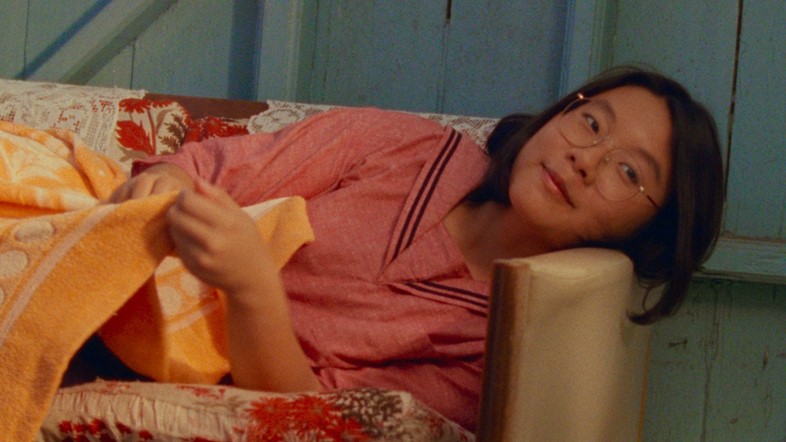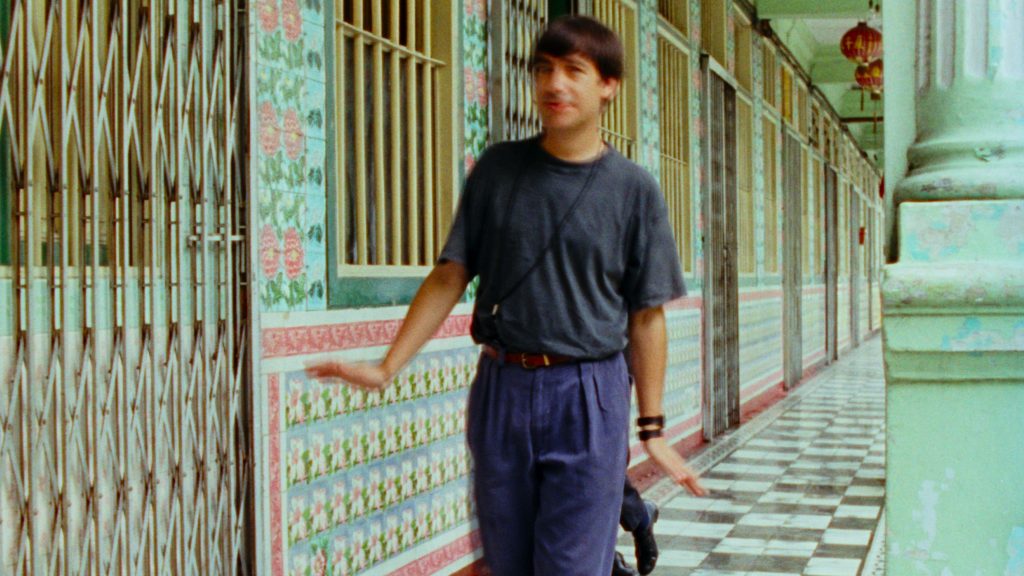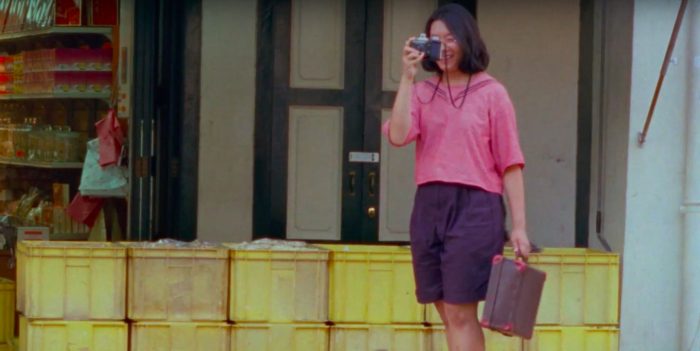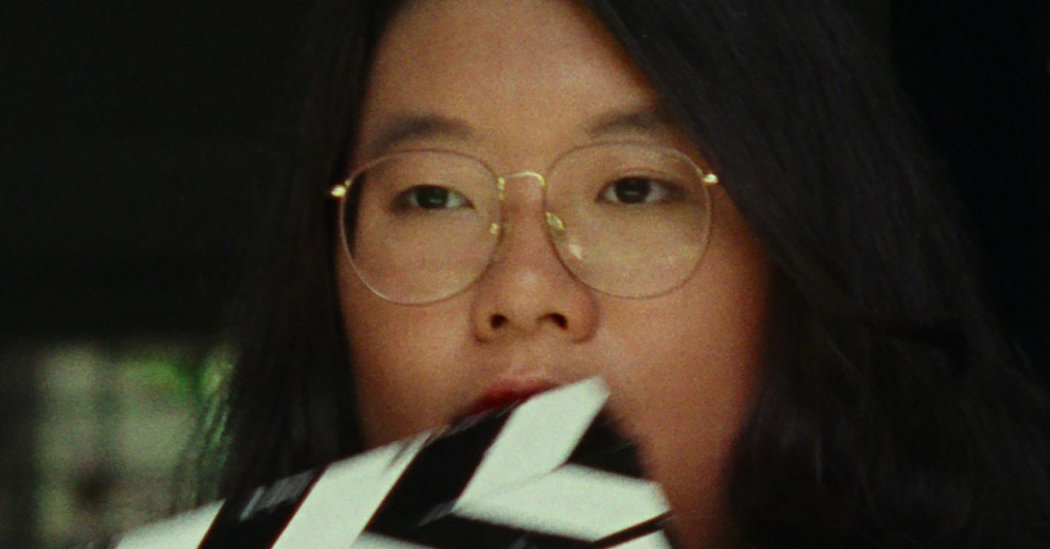On the way, we glimpse a Singapore some of us can only visit in memory; to the rest of us, it is one that is almost lost. As a film, it’s competently made, and we will not spend time discussing the technical elements here. Instead, Shirkers provides us with an opportunity to examine the theme of loss that pervades the documentary, from the loss of innocence of Sandi and her partners in crime Jasmine Ng and Sophia Siddique Harvey. And then there is also the loss of a younger, possibly more innocent Singapore, and the loss of Sandi’s mentor Georges Cardona, in both an emotional and physical sense, Finally, the loss of the film, and its unexpected recovery.
What makes the story unraveling before our eyes all the more painful is the fact that Shirkers, as it might have been made, had the potential to revolutionise the Singaporean cinematic landscape, putting our little island on the map as a place that could produce art with meaning, heart, and that all necessary element of quirkiness that is the mark of the independent film. There is no way for us to categorise in concrete terms what effect Shirkers might’ve had, but if we were to theorise, after the completion of Shirkers and its screening at the Cannes Film Festival (which Cardona claimed to be preparing to submit Shirkers to), critics internationally would take note of Singapore. Competing against such luminary films as The Piano and Farewell My Concubine, the value of Singaporean art in the minds of both the public at home and abroad would increase.
The eventual monopoly of Jack Neo over Singaporean film, and the idea that Singapore film is only good for comedies, might have been broken.
Of course, this is all speculation in an alternate universe that we have no means of reaching, portal guns notwithstanding. So instead we are left with theories and the knowledge that something precious was taken from Singapore as a collective whole.

So naturally, when Sandi, Jasmine, and Sophia meet Cardona at a film class held at the Substation, their common interests of independent film and love of the countercultural voices in America and Europe bind them, despite their lack of knowledge of Cardona’s home, origins, or even nationality.
Sandi decides to fulfil her lifelong dream of producing a feature film, and her now mentor Cardona exhorts her to complete this visionary work of genius, a planned dream-like road trip through Singapore, in which an enigmatic figure murders adults, saves children, and witnesses the lives of others. Sandi is to write the screenplay and star; Jasmine and Sophie to produce and support; Cardona to direct.
Despite the hardships, which include Cardona’s increasing lack of competence and lack of a budget, the filming is completed. However, when Cardona is entrusted with the seventy cans of film to edit together, he suddenly cuts off contact with the girls and vanishes (we later learn, to Australia, and then to the United States). Five years after the theft of the film, a box of tapes is mailed to Sandi, which contain nothing but static, instead of the completed movie. The three friends go their separate ways, each achieving success in their chosen fields (Sandi as a novelist, Jasmine as activist and filmmaker, and Sophia as Chair of the Film Department at Vassar College). Nothing more is heard of the film until September 11th, 2011, when the widow of the now late Georges Cardona contacts Sandi and returns the footage, sans sound.
This return into her life of a project long thought lost for good sparks her decision to reconnect with her friends, and with Cardona, to find out who he was, and why he would choose to steal the completion of a dream from her.

Having to experience the betrayal of a trusted friend and mentor, and over something as important and dear as her first feature is what marks the true end of her childhood. Sandi leaves us in no doubt over the matter that she did care very deeply for Cardona, and she felt he reciprocated. The two of them take a short trip across America just before the filming, and the only physical advance he makes to her is to ask her to touch his stomach, an incident that is never mentioned by either of them afterwards. Having discovered an adult who appreciated the same art and media as her, and treated her as an equal intellectually and emotionally, the venom of teenage Sandi’s anger at her betrayal never touches the adult Sandi.
We are instead given a chance to witness the strange and complex relationship between two people who shared a bond far deeper than that of a physical relationship.
We mentioned earlier that had Cardona not absconded with the film, the future of Singapore film might’ve been very different. In line with this idea, it is worth considering the certain subset of the population that looks on locally produced art with disdain.
The view that pervades is that Singaporean art cannot hope to match the works of our American, European, and even Asian cousins. After all, modern Singapore is less than a century old, and what kind of culture can fifty years hope to create? Yet this ignores the work of people like Sandi and her crew, who wanted to make something meaningful and memorable.

Accompanying all of this is the manner in which Sandi reconnects with Cardona, and learns more about the man after his death, in a sense rediscovering who he was.
Stephen Tyler, another former protégé of Cardona, notes that Cardona was easily threatened by the success of his students, and would attempt to sabotage the culmination of their successes, which was what he believed happened to a project of his own. Georges Cardona the man, whatever his original intentions, was threatened by the work and success of others. In the most ironic twist, he secured his own legacy by stealing Shirkers, thereby ensuring that he would be remembered as the man who did not change the face of Singaporean cinema. Cardona feared losses of his own: the loss of his own mark on history by being overshadowed by the successes of his protégés, and that would result in the loss of his wife, his friendships, and eventually of his legacy. He could have been celebrated as the director of a revolutionary piece of independent cinema, and his fear was what took that away from him.
The footage that we do get to see during the documentary feels like a trip back in time, as we witness a Singapore that is today almost entirely gone. From the fashion choices, to the cityscapes, to the vehicles on the road, the footage captured one woman’s view of Singapore around her, and we are allowed to witness a country that seems simpler, more naïve, and more innocent. Of course, nostalgia does play a part in this, but it is a shock to see images of our country from a mere twenty years ago, which look entirely different from the country we see today.
In a very real sense, we are cut off from our roots because in Singapore; there is no true sense of cultural stability. Victor Hugo, in writing Notre Dame de Paris, discussed the idea that architecture represented the culture of ages past, and a means of conveying that knowledge to the future. In Singapore, buildings from the beginning of our modern founding mostly no longer exist, and that leaves us cut off from our past. With government institutions such as the Singapore Heritage Board curating the stories from the past that are allowed to be disseminated for wider consumption, the view of the past that is presented to us becomes oversimplified, glossing over the grimier parts of our collective history that for whatever reason, the powers that be might not wish to be commonly accessible.
Our youth find it next to impossible to communicate with our elders because of our lack of proficiency in the various dialects. We are forced to create our own identities, as we pick and choose from the numerous forms of popular culture that surround us, plastering together an identity that is truly our own.
Consider the collages that Sandi and her crew create from the various scraps that surround them. We as Singaporeans must do the same, forging individual and collective identities that comprise the ideas of those who came before, and the cultures that influence us. There is no drama without conflict, and Singaporean art, all forms of it, arise from that negotiation between who we see ourselves as, who we want to be, and who we might have been.
We will never know what we as a collective culture lost when Shirkers the film was stolen by Cardona, but Shirkers the documentary certainly presents a very real sense of the emotions surrounding it. From the Singapore of bygone days, to Sandi and her crew as innocent teens, to a friendship that was not yet disrupted, Shirkers gives us a glimpse into what might have been, and what might eventually become of it.
There is certainly pain here, and regret. And yet, when we as the audience are invited to join Sandi on her road trip, there is the feeling that despite the numerous setbacks and potholes in the road, everything will eventually be all right. Shirkers is a breath of fresh air, a reminder that even if you hit bumps in the road of life, you’ll be able to pick yourself up, and move on.
And maybe, just maybe, you might even get closure.





